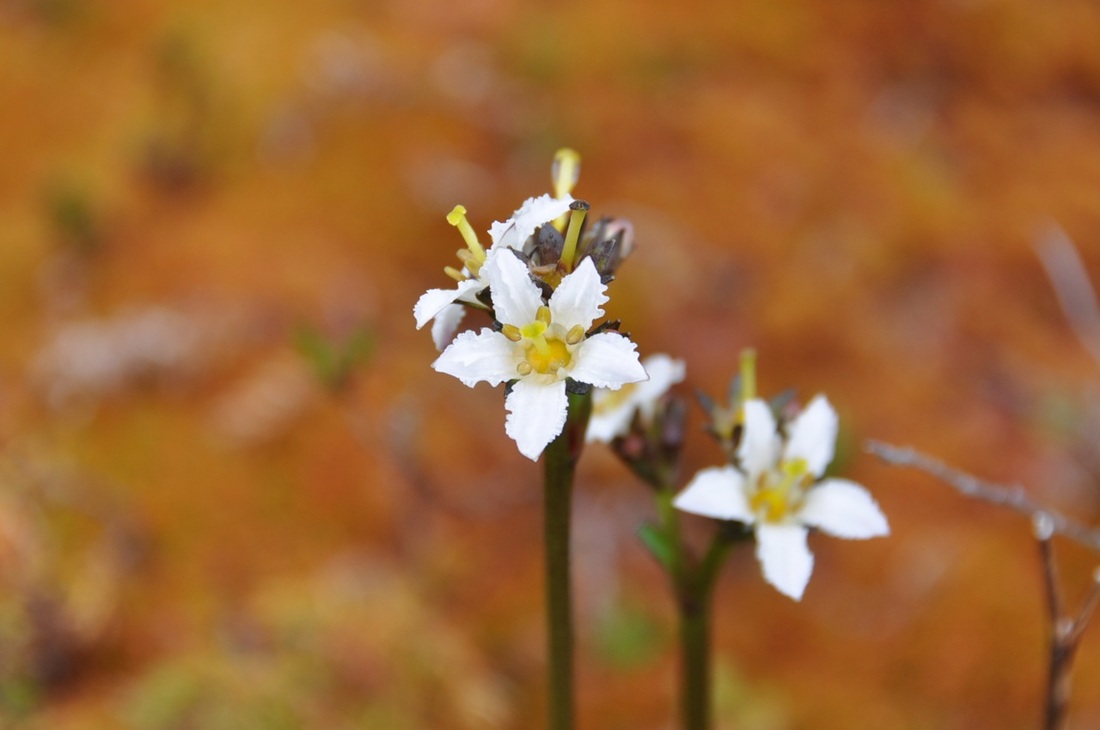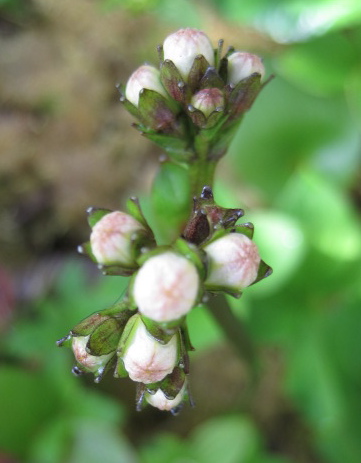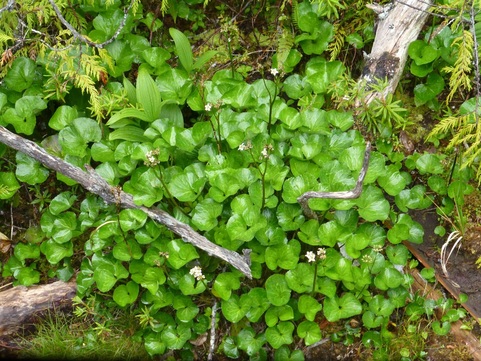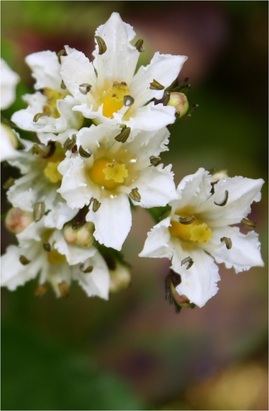Deer-cabbage, deer cabbage • Fauria crista-galli
Identification
Deer-cabbage is often a low-growing perennial plant, though the flowering stems can grow up to 50 cm tall. When in flower, the white and yellow flowers are distinctive, with each small white petal pointed at the end to give the flower a star-shape. There may be up to 30 flowers clustered at the top of a stem. The leaves are all basal, growing from the base of the stem on stalks to 30 cm tall. These leaves are kidney to heart-shaped with blunt toothing around the edges, from 5-14 cm wide.
Habitat & Range
This common coastal species is usually found growing in wet sites, including bogs, swamps, marshes, wet forests, and meadows, at low to medium elevations. While the species does range north to Alaska, it is much less common north of Haida Gwaii. Its range also extends south to northern Washington.
Similar Species
The leaves of deer-cabbage can be confused with those of mountain marsh-marigold (Caltha leptosepala), which does co-occur relatively frequently with deer-cabbage. Mountain marsh-marigold leaves vary from egg-shaped (var. leptosepala) to nearly circular (var. biflora), with leaf lobe edges often touching or overlapping. The lobe edges of deer-cabbage leaves usually do not touch — although leaf crowding may squish the leaves into overlapping.
Intriguing Info
The white flowers give off an odour that attracts pollinators: not bees, like many flowers, but flies.
iNaturalist
https://www.inaturalist.org/taxa/340457-Nephrophyllidium-crista-galli
Deer-cabbage is often a low-growing perennial plant, though the flowering stems can grow up to 50 cm tall. When in flower, the white and yellow flowers are distinctive, with each small white petal pointed at the end to give the flower a star-shape. There may be up to 30 flowers clustered at the top of a stem. The leaves are all basal, growing from the base of the stem on stalks to 30 cm tall. These leaves are kidney to heart-shaped with blunt toothing around the edges, from 5-14 cm wide.
Habitat & Range
This common coastal species is usually found growing in wet sites, including bogs, swamps, marshes, wet forests, and meadows, at low to medium elevations. While the species does range north to Alaska, it is much less common north of Haida Gwaii. Its range also extends south to northern Washington.
Similar Species
The leaves of deer-cabbage can be confused with those of mountain marsh-marigold (Caltha leptosepala), which does co-occur relatively frequently with deer-cabbage. Mountain marsh-marigold leaves vary from egg-shaped (var. leptosepala) to nearly circular (var. biflora), with leaf lobe edges often touching or overlapping. The lobe edges of deer-cabbage leaves usually do not touch — although leaf crowding may squish the leaves into overlapping.
Intriguing Info
The white flowers give off an odour that attracts pollinators: not bees, like many flowers, but flies.
iNaturalist
https://www.inaturalist.org/taxa/340457-Nephrophyllidium-crista-galli
References
Pojar, J. and MacKinnon, A. (2005). Plants of Coastal British Columbia, Revised. Vancouver, BC: Lone Pine Publishing. P. 325.
Fauria crista-galli (Menzies ex Hook.) Makino. deer-cabbage. In Klinkenberg, Brian. (Ed.). E-Flora BC: Electronic Atlas of the Plants of British Columbia. Lab for Advanced Spatial Analysis, Department of Geography, University of British Columbia, Vancouver. Accessed on 27/04/2013.
Authors and editors of page
Chanda Brietzke and Brian Starzomski (2013).
Pojar, J. and MacKinnon, A. (2005). Plants of Coastal British Columbia, Revised. Vancouver, BC: Lone Pine Publishing. P. 325.
Fauria crista-galli (Menzies ex Hook.) Makino. deer-cabbage. In Klinkenberg, Brian. (Ed.). E-Flora BC: Electronic Atlas of the Plants of British Columbia. Lab for Advanced Spatial Analysis, Department of Geography, University of British Columbia, Vancouver. Accessed on 27/04/2013.
Authors and editors of page
Chanda Brietzke and Brian Starzomski (2013).








